An evidence-based approach for anticipating future change.
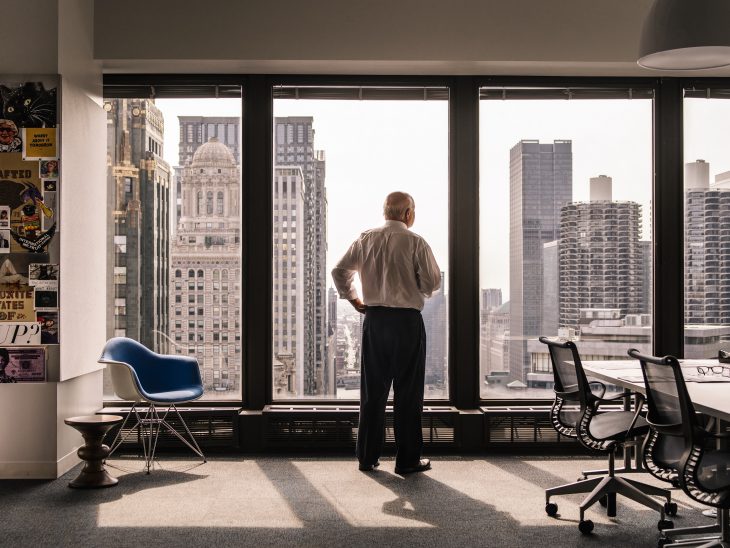
It’s not uncommon for organizations that are very serious about getting their next workplace right to hire a futurist to crystal-ball a solution. How could you blame them? Like so many of life’s big, expensive decisions, it’d be such a relief if someone would just tell us what to do.
The opposite approach – to make decisions based on established industry benchmarks – is even more common. But this only perpetuates the status quo. Does it really make sense to use yesterday’s metrics to create your “workplace of the future”?
Instead of declaring what the next big trend will be, or looking over our shoulder at benchmarks, at Herman Miller we instead turn to the company’s long history of research and systems thinking to help customers make evidence-based design decisions about their workplaces. For example, in his 1968 manifesto, The Office: A Facility Based on Change, Robert Propst pointed to a unique growth structure informed by “the total behavior of an organization, its goals, values, [and] people.” Decades of research and development since then have shown us that this can be best communicated in terms of people, process, and place.
That’s the framework we use today to analyze and synthesize new data about how and where people work. The result is an ever-evolving series of insights that can help organizations evaluate the total experience of work in their workplaces and support it accordingly. It’s a holistic approach that helps us, and them, to understand where certain tools and solutions will fit into the larger ecosystem of their own particular work environments.
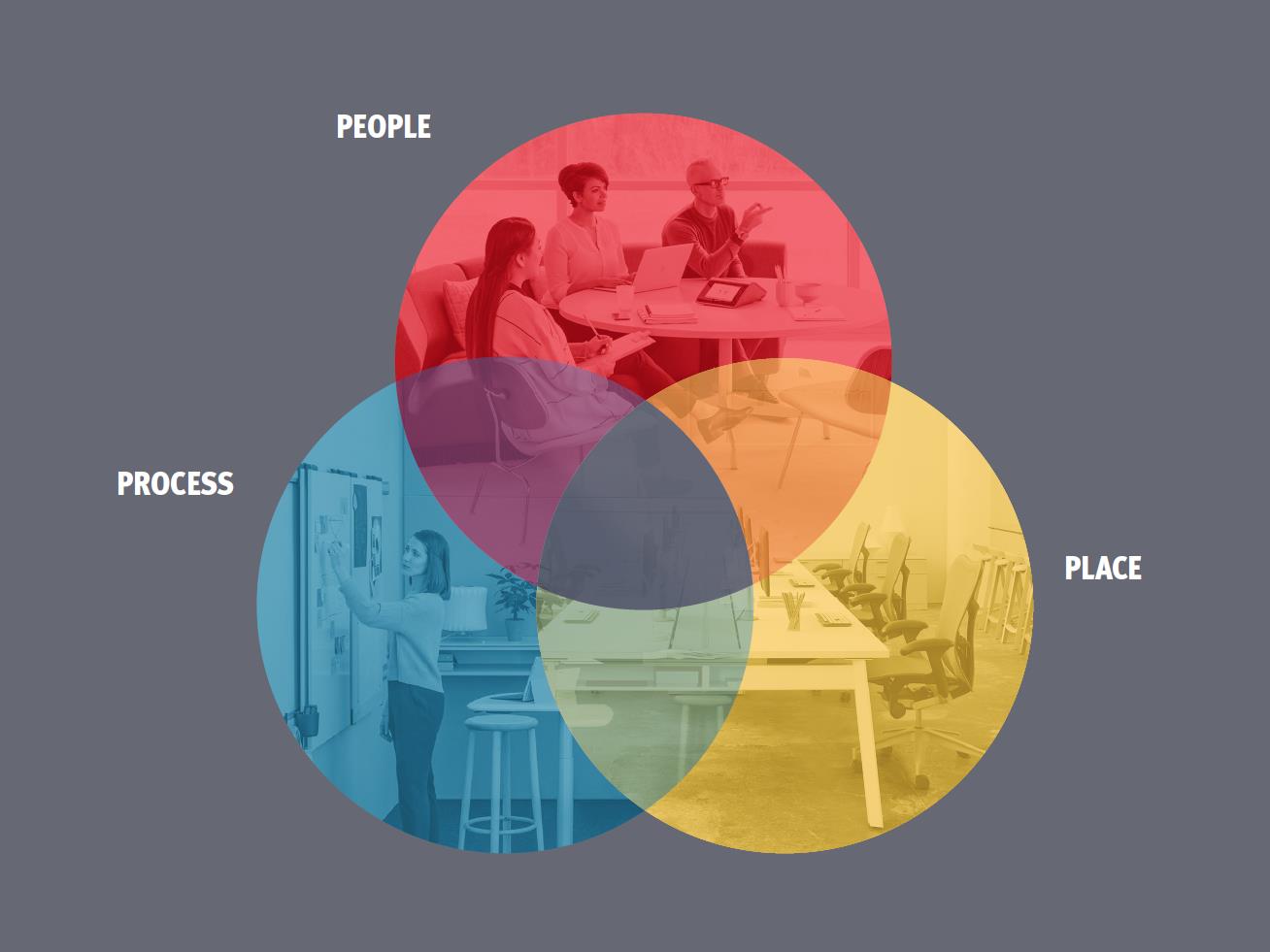
We recently shared some of the insights at a series of events with a handful of leading organizations, architects, and designers in Seattle, New York, Chicago, and Atlanta. Several consistent themes emerged. We’ve captured the highlights below, with notes on the impact they can have in the workplace and how you might harness that impact in your own organization or for your own clients.
1. The increasing complexity of work demands greater collaboration and teamwork.
When it comes to the people in a workplace, be sure to consider how this increase in collaboration and teamwork affects their experience. In this type of environment, employees must continuously be learning new skills as individual and team output becomes more specialized. People are finding that they need more autonomy to seek out the right collaborators, tools, and processes to achieve goals; they also need the flexibility to adapt quickly when conditions change. Face-to-face interaction – both in person and online – will become more important.
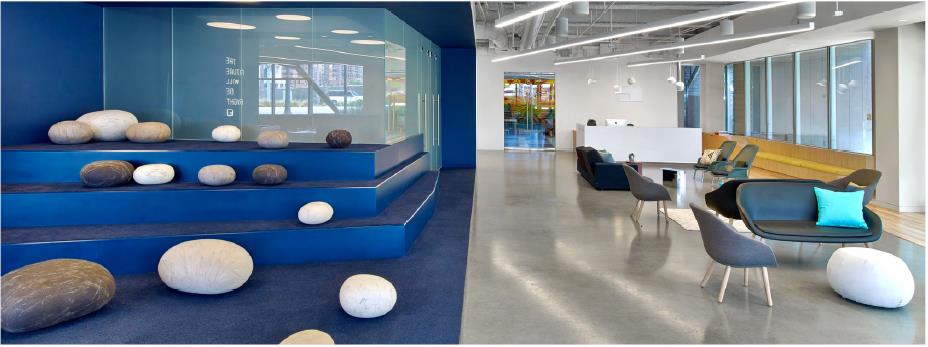
This can impact the design and management of a workplace in many ways. Programming and planning must go beyond departmental separation toward more agile spaces that can support a wider variety of work styles. Measuring space utilization and decreasing underutilized space can allow for an increase in new types of settings shared by individuals, teams, and the broader workplace community. And by taking a more nuanced and intentional approach to the design of sightlines and circulation, you can increase visibility into community areas, while also providing more “shielding” for areas where employees can focus on work that requires their full concentration.
Effective strategies for supporting this shift include discovering and designing for representative personas and team types in your organization to inform the appropriate settings for individuals and groups. This goes beyond just providing phone booths for privacy, for example, and generic innovation spaces to promote collaboration. Instead, you must intentionally link job functions with the right supportive settings, ensuring that those settings can evolve as job functions change. Once you determine the right mix of settings, urban planning principles can be useful in deciding where to locate them based on patterns of movement and encounter. And you can enhance mood, support environmental control, and help cultivate desired states of mind by looking to sensory design and implied space principles.
2. Process automation and data collection will redefine the value of people’s work.
Robots can do a lot of things, but they’re not very good at collaborating. The increased focus on collaboration and teamwork mentioned above, along with the automation of many simpler tasks, means that uniquely human efforts will come into sharper focus: things like creativity, collaboration, synthesis, strategic thinking, design thinking, complex problem solving, and empathy. This will lead companies to create new metrics to measure employee performance, taking a results-based approach instead of a presence-based approach.
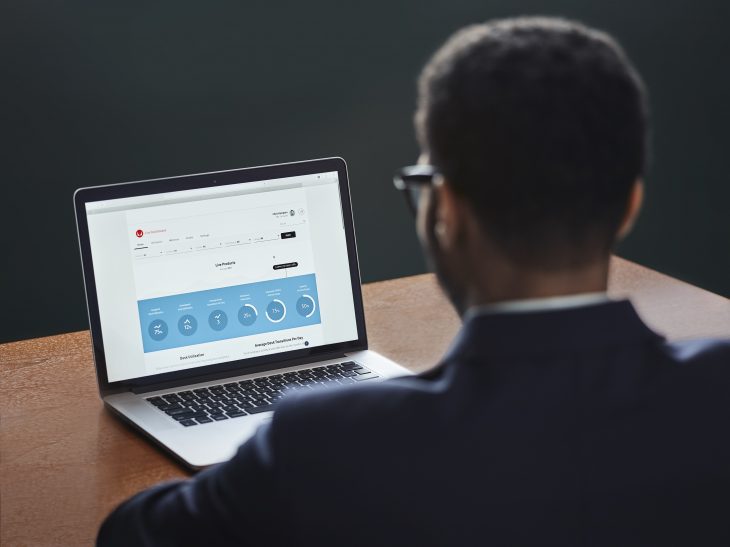
What does this mean for the design and management of your workplace? For one thing, designers will need to focus less on traditional space programming and more on the human experience of the individuals and teams who occupy the space. And as data sensing becomes more ubiquitous, the efficacy of different spatial settings and experiences can be quantified. These metrics will increase the need for more agile spaces that can be easily reconfigured based on the data you collect.
You can harness the value of more automation and data collection by identifying the opportunities and risks it presents for your own organization. Which individuals’ and teams’ work will increase in importance, and which will need to learn new skills? Data collection still makes many people uneasy; ensure that the tradeoff is seen as worthwhile. (For example, you’re probably ok with letting Google know your location data because you like to get accurate directions from Google Maps.) Finally, identify ways to measure how an improved work environment can advance your organization’s business purpose, and then look for opportunities to bolster those metrics with data on the experience of work in your new space.
3. Economic pressures and urbanization are condensing workplace square footage, disrupting where work gets done and how those places are created.
As footprints decrease in many markets, work-life balance will continue shifting to work-life integration as people become more mobile and work moves outside the office. Assigned workstations and offices are already sitting vacant most of the time: based on our space utilization studies, the average hovers at 59 percent of the time for assigned workstations and 64 percent of the time for assigned offices. These numbers will rise as fewer individuals claim dedicated personal areas in the office and instead visit their physical workplaces primarily to interact in-person with others.
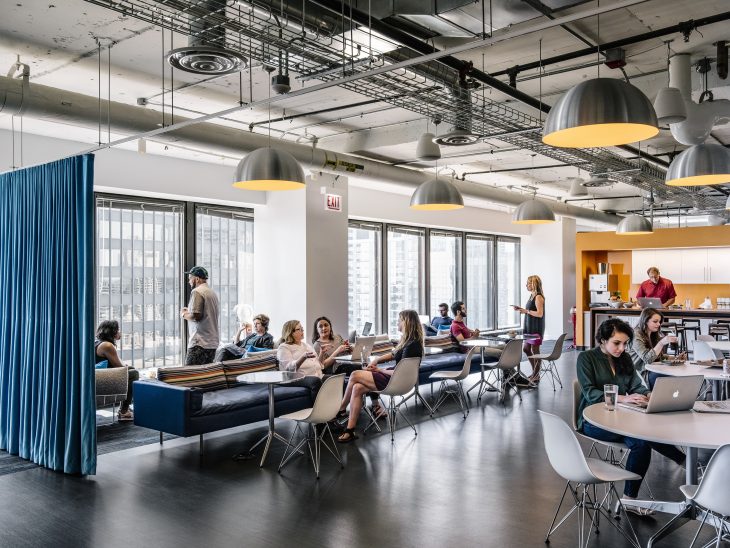
Design and management-wise, this means people will have less of a need for work-related storage (which is shifting to the cloud), and a greater need for personal storage to support their “lives on-the-go”. Workplace IT infrastructure will evolve to securely support increasing agility, personalization, and efficiency in the process of work. And as organizations reduce owned space and long-term leases, the employee experience will be supplemented by a greater variety of shared and community-focused settings, and off-site coworking spaces.
You can support these changes by evaluating the success of current business strategies (talent, technology, etc.) and looking for alignment with workplace-specific data, like space allocation, utilization patterns, and employee sentiment. From there, you can better define and support flexible work strategies, with a special focus on understanding the remote and unassigned work experiences of your employees. And when employees do come together in the physical office space, you can improve social cohesion with intentional places for diverse groups to connect and individuals to retreat.
What do these insights have in common? Each offers a look at how changes in the experience of work may relate specifically to your work, the work of your teams, and the work of your broader organization. By learning more about these connections, you can identify opportunities to back decisions with data, support employees more effectively, and ultimately, measure the success of a new work environment. No trend or “next big thing” to see here: your particular solutions (and the metrics you use to measure them) will be unique – intrinsically tied to the people who make up your organization – and will set you up to better support those people as the experience of work inevitably continues to evolve and change.
Learn more about building a new, evidence-based approach to your workplace here.
This article was written in partnership with Herman Miller.



Really beautiful and amazing blog article. Thanks a lot for sharing with us.
I love that you pointed out just how mobile today’s people are when it come to work. This definitely changes what an office in today’s world needs to be. Excellent article.